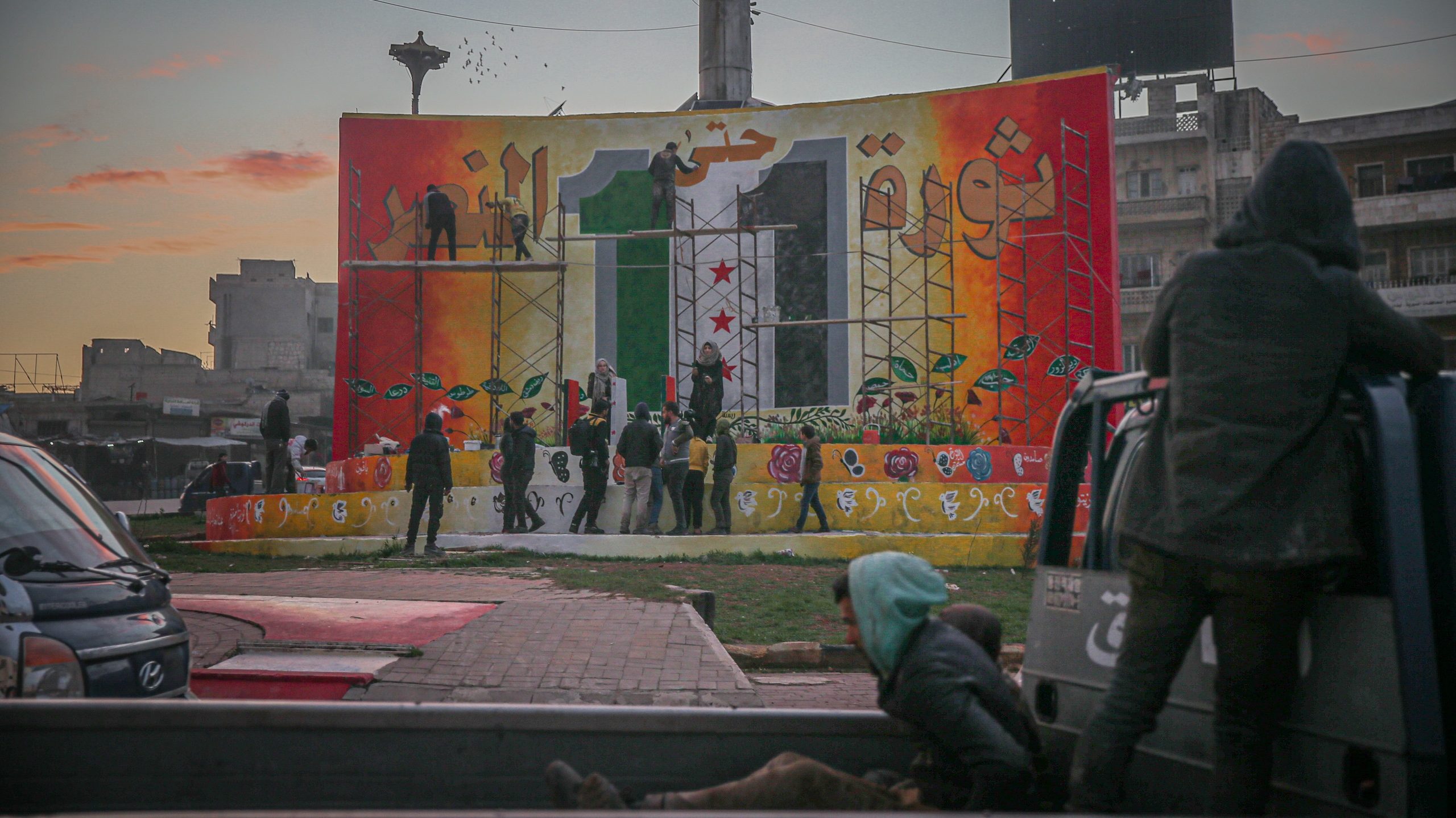Analysis: 11 Years Into Syria’s Civil War, No End in Sight
The Syrian Observatory for Human Rights estimates the death toll at more than 606,000
While the world watches the war in Ukraine enter its third week, a bitter anniversary is being observed in Syria, where the bloody civil war is beginning its second decade.
The deadly conflict erupted in March 2011, when thousands dared to demonstrate demanding social and political reform. The government responded with a brutal crackdown, using live fire to quell the protests.
What was a peaceful uprising against President Bashar Assad 11 years ago turned into a full-fledged civil war, inflicting immense suffering on the Syrian people.
The war has drawn in regional and international actors, devastated the country, and left many of Syria’s cities shattered.
The fighting has killed at least 400,000 Syrians and displaced more than half of the pre-war population of 21 million, with an estimated 6.7 million people internally displaced and 6.6 million refugees, mostly in neighboring countries such as Lebanon, Jordan, Turkey, and Iraq.
UN human rights chief Michelle Bachelet said 26,727 of the slain were women and 27,126 were children.
The UK-based Syrian Observatory for Human Rights, a monitoring group with a network of sources on the ground, says it documented the deaths of 494,438 people by June 2021. The group estimates the actual toll at more than 606,000.
More than 100,000 Syrians have been forcibly disappeared; family members accuse government forces of being behind most of these cases.
Eleven years on, the humanitarian situation for Syrians is dire, more than 14 million people depend on humanitarian aid, inflation is skyrocketing, and the poverty rate stands at a staggering, unprecedented 90%.
Until Russia intervened in 2015, the Assad regime’s grip on power teetered on the verge of collapse.
The country had quickly descended into bloody chaos and one of the most complex civil wars the world has ever seen.
The opposition was made up of several groups, with regional powers supporting several local forces, from secular to religious, to advance their geopolitical interests on Syrian battlefields.
At the outset of the uprising, the US, UK, and France supported what they considered “moderate” rebel groups, but with time, that support faded.
The opposition quickly claimed control of huge swaths of territory, threatening decades of Assad family rule. President Assad’s forces received help from allies such as Iran and the Lebanese armed group Hizbullah, saving him from outright defeat.
The chaos in Syria and elsewhere in the region gave rise to groups like the Islamic State organization. ISIS fighters presided over large territories in Syria and neighboring Iraq, employing gruesome methods to instill fear in those who opposed them.
US forces in Syria provided financial help, weapons, training, and military support to the Syrian Kurds fighters known as the Syrian Democratic Forces (SDF), and they are credited with defeating ISIS.
Since then, ISIS lost control of most of the area under its rule, and much of its appeal diminished. However, the movement’s sleeper cells continue to carry out frequent and deadly attacks.
It wasn’t until late 2015 that Damascus’ longtime ally Moscow intervened. In a move that altered the course of the conflict, Russian President Vladimir Putin ordered his military to provide desperately needed support to Assad’s exhausted army.
In March 2020, Russia and Turkey negotiated a cease-fire to halt a government offensive to retake the northwestern Idlib Province, the last large rebel stronghold. This led to an extended reduction in violence, but skirmishes, airstrikes, and shelling have intensified in the past year, particularly in southern Idlib.
Now, with Russia preoccupied with its invasion of Ukraine, a dark cloud has descended over the future of the conflict in Syria. Many fear that the war in Europe will have bad consequences for the people of Syria, where the price of fuel, wheat, and other essential commodities is steadily rising.
Assad now controls more than two-thirds of the country, while the Kurdish-led SDF controls the northeast, and armed groups opposing Damascus control the northwest. There is no sign he is willing to negotiate with political opposition groups that demand he relinquish power before reaching any settlement.
The international community’s efforts to bring peace to Syria have come to naught, with nine rounds of UN-mediated peace talks − known as the Geneva II process − failing to achieve a breakthrough.
The fighting has subsided in many parts of the country, but in no way is life back to normal.


